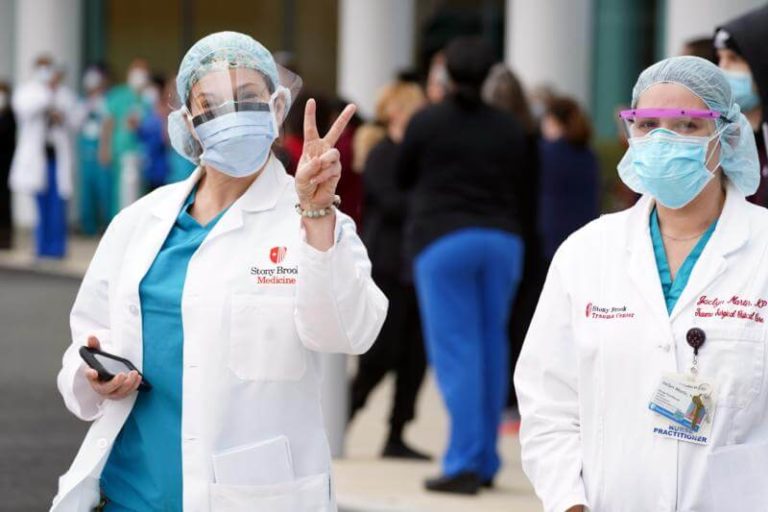I start this column with a heavy heart. A classmate’s brother with the COVID-19 virus is fighting for his life on a ventilator in an intensive care unit. A classmate’s daughter Lizzie, an oncology nurse in New York City, stands ready to be reassigned to the care of pandemic patients. Our son Ryan, a geriatrician, has been exposed to infected colleagues and patients while staying on the front line.
Despite the chaos, deaths, job loss, economic hardships and massive suffering inflicted on an unprepared and hapless global community, the prism of COVID-19 casts shards of light that illumine certain truths about our personal, communal and spiritual lives: who we are, who we are to one another and who God is to us.
This plague has opened our hearts and minds to questions that we should have been asking all along: What is most important to us? Do we love well? What can we count on? What is our purpose here and now, and how do these relate to what God promises awaits us: eternal life?
It is ironic that the pandemic has come upon us during Lent: the designated time to give form to these thoughts through an examination of our self-centeredness, the gifts of ourselves we can make to others, and time carved out to talk to God. For many people, COVID-19 has made these practices instinctive, pervasive and integral to the way many of us now think and respond.
Being homebound, we discover new ways of being in our homes: not just shelter in place, but circles of belonging, love, affirmation and commitment. With so many more waking hours together, we make it through our cranky and exhausted moments countered by the gratitude that we are safe in one another’s company.
We talk, share fears, laugh, rediscover beloved games under dusty covers, travel on internet highways to aunts, uncles, grandparents, long-lost roommates, and somehow know, as Julian of Norwich did, that all will be well.
We pay attention to our loved ones, the little green buds on the trees that open a little more each day, crocuses and first daffodils in neighbors’ yards, cardinals, nuthatches, finches, juncos who take their turns at the bird feeders, and robins who poke their heads in the spring earth looking for worms.
Somehow the beauty and holiness of the earth shows what we do have: God whose creation shouts out to us how loved we are. We may not have a map of where we are headed, but we have the compass that points toward compassion and consideration as the way out.
Fear cannot hush us as we bang our pots, pans, walking sticks and fire pokers against metal railings, or sway and jive to joyful rhythms across balconies and apartment windows.
Against the threat of physical harm, first responders, health professionals, essential services providers, drivers, stockers, cashiers, et al., show up to do their part as we say “thank you” and desperately want it heard.
Nobody seeks the risks, but our sons, daughters, fathers, mothers, siblings, friends and people whose names we will never know do it because they can, and because our well-being is worth it to them. In our vulnerability, we claim each other, sacrifice for each other and know that we can only make it out together.
Another friend’s grandson Keane chalk-painted on his driveway, “Christ is here.” Indeed he is; he is risen and so are we. Our life here is not from life to death as we age, but from death to life as we grow in love and connectedness.


